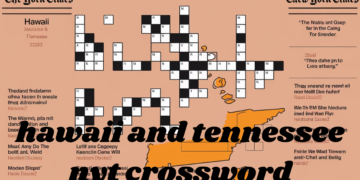Improvisation is often considered one of the most exciting and rewarding aspects of music, allowing musicians to create spontaneously and express themselves in unique ways. For pianists, improvisation can range from jazz solos to classical cadenzas, or even creating new melodies over familiar chord progressions. While many associate improvisation with instinct or “natural talent,” a strong understanding of music theory is essential to truly master this skill.
1. The Role of Scales in Piano Improvisation
Scales are the foundation of almost every improvisational technique, and a deep understanding of them allows pianists to create melodies that sound cohesive and musical.
- Major and Minor Scales: These basic scales are essential for improvisation, particularly in classical and contemporary music. Knowing your major and minor scales allows you to confidently move through chord progressions and create melodic lines that complement the harmony.
- Pentatonic and Blues Scales: In genres like jazz, blues, and rock, the pentatonic scale is one of the most common tools for improvisers. Understanding its structure allows pianists to play effortlessly within a set of notes, providing freedom to explore different melodies while avoiding dissonance.
- Modes: Modes such as Dorian, Mixolydian, and Phrygian offer unique flavors to improvisation. A knowledge of modes expands a pianist’s palette, enabling them to improvise within different tonalities and evoke distinct emotions.
Piano lessons in North Hills help master these scales and modes, pianists can improvise more fluidly, knowing which notes and intervals will create harmony and which will generate tension.
2. Chord Progressions and Their Impact on Improvisation
Understanding chord progressions is key to creating effective, harmonically sound improvisations. Most classical and modern music is built on a series of chord changes, and knowing these progressions intimately allows pianists to navigate them with ease.
- Common Chord Progressions: In both classical and modern music, there are familiar progressions that serve as the backdrop for improvisation. For example, the I-IV-V progression (the tonic, subdominant, and dominant chords) is foundational in Western music. In jazz, the ii-V-I progression is a cornerstone of improvisation.
- Chord Inversions and Extensions: A strong understanding of chord inversions and extended chords (such as seventh, ninth, and eleventh chords) provides pianists with more options for improvising. These variations add color and sophistication to the music, allowing pianists to create more complex and interesting solos.
- Harmonic Rhythms: Knowing the rhythm at which chords change is also crucial. By understanding the underlying harmonic rhythm of a piece, pianists can time their improvisation to fit the chord changes seamlessly.
When pianists are comfortable with common progressions and chord variations, they can focus on expressing creativity rather than struggling to fit their melody into the harmony.
3. Intervals and Improvisation: Building Unique Melodies
Understanding intervals allows pianists to explore different melodic contours and harmonies within a key.
- Interval Recognition: Whether it’s a third, fifth, or seventh, recognizing intervals on the fly is essential for improvisers. Knowing how intervals work within the context of scales and chords enables pianists to confidently jump between notes and create more dynamic, expressive melodies.
- Creating Tension and Resolution: In improvisation, moving between intervals of tension and resolution is key to keeping the music interesting. For example, a leap of a seventh can create tension, while resolving it to a perfect fifth creates a sense of closure. Pianists can manipulate intervals to shape the emotional trajectory of their improvisation.
- Chromaticism: The use of chromatic intervals (notes outside of the key) can also add color and complexity to improvisation. Understanding how to navigate these intervals allows pianists to add unexpected, yet musically coherent, moments to their playing.
Also Read : Lighting and Wiring Upgrades: How to Make Your Home More Modern with an Electric Remodel
Conclusion
A solid foundation in piano theory is invaluable for any aspiring improviser. Understanding scales, chord progressions, intervals, rhythm, and how these elements work together allows pianists to unlock their creativity and express themselves freely through their music. Whether you’re playing classical cadenzas or jazz solos, music theory gives you the tools to navigate harmony and melody confidently. So, the next time you sit at the piano to improvise, remember: theory isn’t just a set of rules—it’s the framework that supports your musical freedom.
FAQs
1. Can a pianist improvise without knowing music theory?
While it’s possible to improvise without formal music theory knowledge, understanding theory significantly enhances a pianist’s ability to create cohesive and expressive improvisations.
2. What’s the difference between classical and jazz improvisation?
Classical improvisation often involves ornamenting existing themes or creating cadenzas, while jazz improvisation focuses on creating spontaneous solos over chord progressions, often using complex harmonies and rhythms.
3. Do I need to be an advanced pianist to improvise?
No! Beginners can start improvising with simple scales and chord progressions. As you develop your skills, you can incorporate more complex theory into your improvisations.
4. How does learning scales help with improvisation?
Learning scales gives pianists a framework of notes to work with, helping them create melodies that are harmonious with the underlying chord progressions during improvisation.



































Comments 1